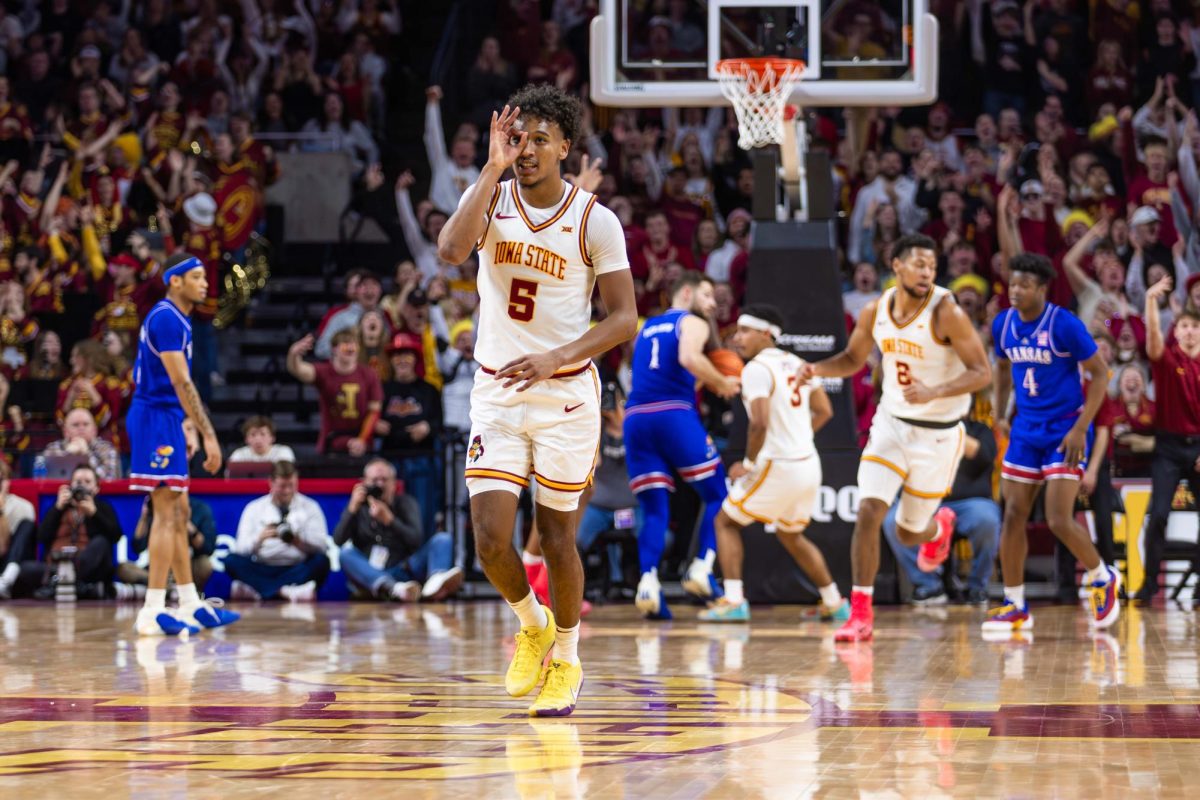Exhibit offers critique of students’ art
March 21, 2005
It is often said a picture is worth a thousand words, but at Print and Photo, words and art came together.
Students who entered pieces in the exhibit, on display in the Pioneer Room of the Memorial Union until April 3, had their work critiqued as part of the annual juried event.
Stephanie Brunia, junior in art and design, says specialized exhibits like Print and Photo are important because they spotlight specific areas of the extremely diverse art world.
“I think there are so many different ways you can go in any different medium, and it’s good to focus,” Brunia says.
Brunia says although the piece she entered into Print and Photo was originally part of an assignment for one of her classes, her love of the medium led her to put her work on display.
“I like black and white photo because there’s just something timeless about it,” Brunia says. “There’s something to it that’s lost when it comes to digital.”
Matt Conradt, senior in art and design, says having another person’s perspective on your work is an integral part of the creative process.
“It’s very essential to a lot of what I like about art,” he says. “It’s all about critiquing and feedback. It’s an indication of how you can go about continuing with your work.”
David Kamm, assistant professor of art at Luther College in Decorah, served as the juror at this year’s exhibit.
He says he agrees having another perspective can be an important part of an aspiring artist’s development.
“If you are satisfied having one voice, that’s fine,” he says. “But if you want to engage something else, another voice is required. We can grow on our own, but the growth is slow and we don’t often see the distortions in it.”
Entering into juried competitions like Print and Photo are extremely helpful for students who hope to learn skills they will continually use as professional artist, says Letitia Kenemer, gallery coordinator for the Memorial Union.
“For artists, it’s a good way to get their work on display and learn how to get work into juried competitions,” she says.
“It’s good for people to see that student work is on par with professional artists.”
Conradt, who entered a monoprint series inspired by growing up in Iowa, says the steps to get a piece into a juried exhibit can be exhausting.
“It’s a pretty rigorous process,” he says. “Presentation is important, and it takes time, energy and money.”
Kamm says the most challenging part of the process for young artists is finding the courage to put your work on display for the world to see.
“It’s one thing to make something and keep it to yourself,” he says.
“It’s another thing to put it out there.”
As juror for the exhibit, Kamm says there are many aspects of each piece one must consider when critiquing an artist’s work.
“You can objectively look at things like technical competence and the ability to work with materials,” he says. “Even the presentation of the piece, framing, matting, etc.”
Kamm says there is a common thread that runs throughout the students’ work, regardless of what medium they choose to work in.
“There was a beautiful sense of composition,” he says. “There’s something about the organization of space that came out very strongly in that show. There was intent behind it.”
Brunia says she agrees with Kamm’s assertion that exceptional compositional skills are a major part of how Iowa State shapes young artists.
“I think you learn strong composition and the fundamentals for making that composition really pop,” she says.






